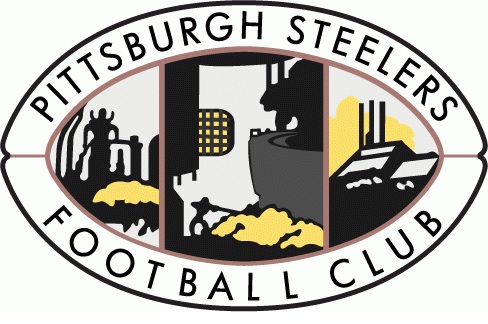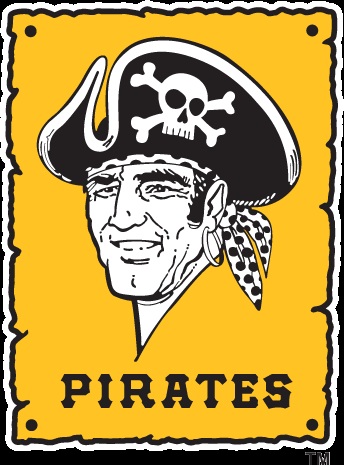The Pittsburgh Logos Project
October 13, 2012 Leave a comment
Before this season, the Toronto Blue Jays, Florida Marlins and Baltimore Orioles all announced some changes to their look before the season. The Marlins completely altered their identity. They are now the Miami Marlins and have new colors, logos, uniforms and a new ball park to boot. The Blue Jays and Orioles simply changed their logos back to similar designs they used in the past.
Without question, tons of money was spent in all three cases so the teams could develop these logos, generate interest and marketing campaigns for them, and ultimately decide if they would help the public perception of those teams. (A friend of mine works for the company that rebranded the Marlins and he informed me that the transition was no small financial or physical undertaking.)
Although the Marlins and the Blue Jays both failed to make the playoffs, the Orioles powered their way into the postseason and lost to the Yankees in the ALDS. Regardless, the 2012 Baltimore Orioles and their revamped logo will be thought of as a winning team, especially compared to most other Orioles teams in recent history.
Ultimately that’s what matters.
In my opinion, the primary goal of a logo change is to associate the new logo with a winning team (and winning tradition) and to be accepted by the fans as a true seal of that franchise, both presently and historically. If both of these criteria are met, then merchandise revenue will go through the roof and people will instantly recognize a symbol and think “winner.”
There are a few “winner” symbols that are recognized across the U.S.: the Yankees’ “NY,” the Detroit Redwings’ winged wheel, and of course, the Pittsburgh Steelers’ triple hypocycloids all come to mind. These are iconic logos long associated with winning, just like the McDonald’s arches is an icon long associated with obesity.
Recently, the success of the Orioles and their new logo got me thinking about the success of the Steel City and its logos.
Pittsburgh has had its fair share of winners throughout its professional sports history. The Steelers have six championships while the Pirates and Penguins have won five and three, respectively. Even without mentioning championships, the Steelers and Pirates are historically winning franchises; the Steelers have a .523 all-time win percentage and the Pirates are at .503 all time. And the Penguins aren’t far behind with an all-time points percentage (points divided by maximum possible points) of .497.
So here’s the question I posed: Where do all the professional Pittsburgh sports logos rank all time in win percentage amongst the three teams?
To answer this question, I keyed in on a few very helpful resources. Using Chris Creamer’s Sports Logos Page – www.sportsLogos.net (“Your virtual museum dedicated to education of the history of sports logos and sports uniforms.”), I was able to identify practically every logo that the Pirates, Steelers and Penguins ever used. There were a few gaps in which the franchises played but no logos are listed, but for the most part the information is relatively comprehensive. Then, I cross-referenced the logo’s years with the statistical data of each team using www.pro-football-reference.com, www.hockey-reference.com and www.baseball-reference.com.
I compiled all the information and boiled it down to an easy-to-read catalogue of black and gold (and red and blue and a surprising array of other colors used in Pittsburgh logo history) for your browsing pleasure. At the bottom of this entry are charts indicating the chronological order of the logos used for each franchise, as well as each logo’s all-time franchise rank and all-time Pittsburgh rank in win percentage. Before those, you’ll find the win percentage ranking, one by one, of all the logos ever used by the Pirates, Steelers and Penguins.
Disclaimer: Before you check out the list, there are a few things you should know. All the information below is based on the primary logo for each team at that time. That doesn’t necessarily mean it’s the logo used on the uniforms or even the logo you were most used to seeing most of the time. All of these franchises have used alternate logos throughout their histories (which you might have thought were the “main” logos), but those are not included in this list.
Secondly, to compare logos across different sports, I used win percentages for football and baseball and points percentage for hockey. They aren’t the same statistic, but both are the most useful in their respective sports to judge the amount of winning the teams had done. Also, ties have a different statistical bearing in the NFL than they do in MLB AND the NHL. Since 1972, the NFL has counted each tie a half a win. So you’re not confused, I counted all ties (even before 1972) into my win percentages for the Steelers.
Finally, I’ve come to the conclusion that I really doubt there is some type of correlation between win percentage and a primary logo. There have been some studies that suggest there is a correlation between uniform colors and winning, but remember, these primary logos didn’t necessarily appear on the uniforms of the teams they represented. I’m no scientist, but I’m guessing the teams in this list with the highest winning percentages probably would have won just as much had they been represented by any other primary logo.
This is not a scientific study that is meant to be broken down and analyzed in terms of WHY certain logos were successful and WHY others were not. I’m just revealing that some WERE and others WERE NOT. Perhaps the Pirates logo from 1908-1909 had magical powers. Or perhaps it was because those years just happened to feature one of the greatest Pirates to ever play baseball. (I’m guessing the latter.)
So why, you ask, did I take all the time and do all the work for this list?
For the sake of fun and curiosity. And because I knew I would uncover some interesting stuff.
Here are some of the fun facts I discovered:
- The first three primary logos for both the Steelers and Penguins were all losers.
- The Pirates first primary logo with a win percentage under .500 was their fifth (1915-1919).
- The longest tenure for any one logo in Pittsburgh is the Steelers fourth franchise logo, which was used for 32 years (1969-2001).
- The logo with the most championships in Pittsburgh history (four) is also the Steelers fourth franchise logo (1969-2001).
- The Pirates have had only three logos with losing records in team history (1915-1919, 1948-1959, and 1997-Present).
- The Pittsburgh logo with the lowest all-time win percentage was the first primary logo for the Steelers. At that time, they were the Pittsburgh Pirates. Go figure. The uniforms worn by the team using that logo are the current Steelers’ throwback uniforms.
- The Steelers primary logo was actually changed after the 2001 season. Even though it looks practically identical, the new logo (used from 2002 to the present) features slightly darker colors throughout.
- The Pirates changed their logo 10 times in the franchise’s first 35 years and each time the change was to another depiction of a “P.”
- Out of the three current primary logos used by the Pirates, Steelers and Penguins, only the Steelers’ logo ranks among of the top 10 all-time Pittsburgh logos in win percentage.
- All Pittsburgh franchises featured both black and gold in their logos from their inception – except for the Pirates, who didn’t use both colors in their primary logo until 1948.
- The most successful Pirates logo (and Pittsburgh logo) was used from 1908-1909. Those years also featured arguably the greatest player in Pirates history, Honus Wagner. One of the rarest and most valuable baseball cards in existence is a Wagner card from 1909.
- Both of the current throwback/alternate uniforms for the Steelers and Penguins were from teams represented by logos with the lowest win percentage each franchise’s respective history (1933-1939 Steelers, 1968/69-1970/71 Penguins).
- The Pirates are the only Pittsburgh franchise to use the same logo during two, non-consecutive periods in team history (1921 and 1932).
- All three franchises have used the color blue in the primary logos at some point in their history.
- Sixty-five percent of all Pittsburgh professional primary logos are winners (17 of 26). Thirteen of those winning logos are from the Pirates franchise.
If there’s anything else you notice and I didn’t mention before, feel free to let me know. But above all else…
Enjoy.





























